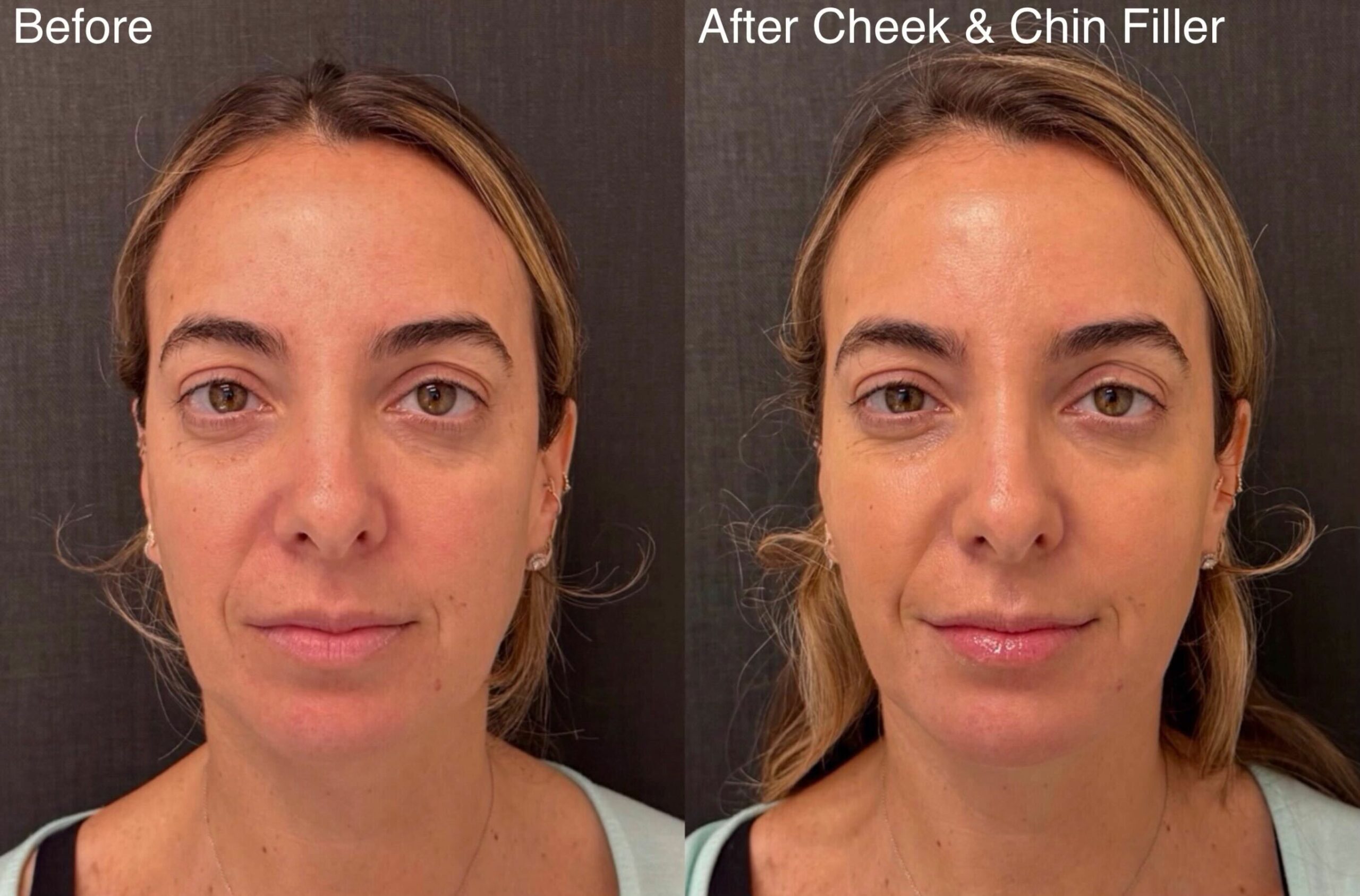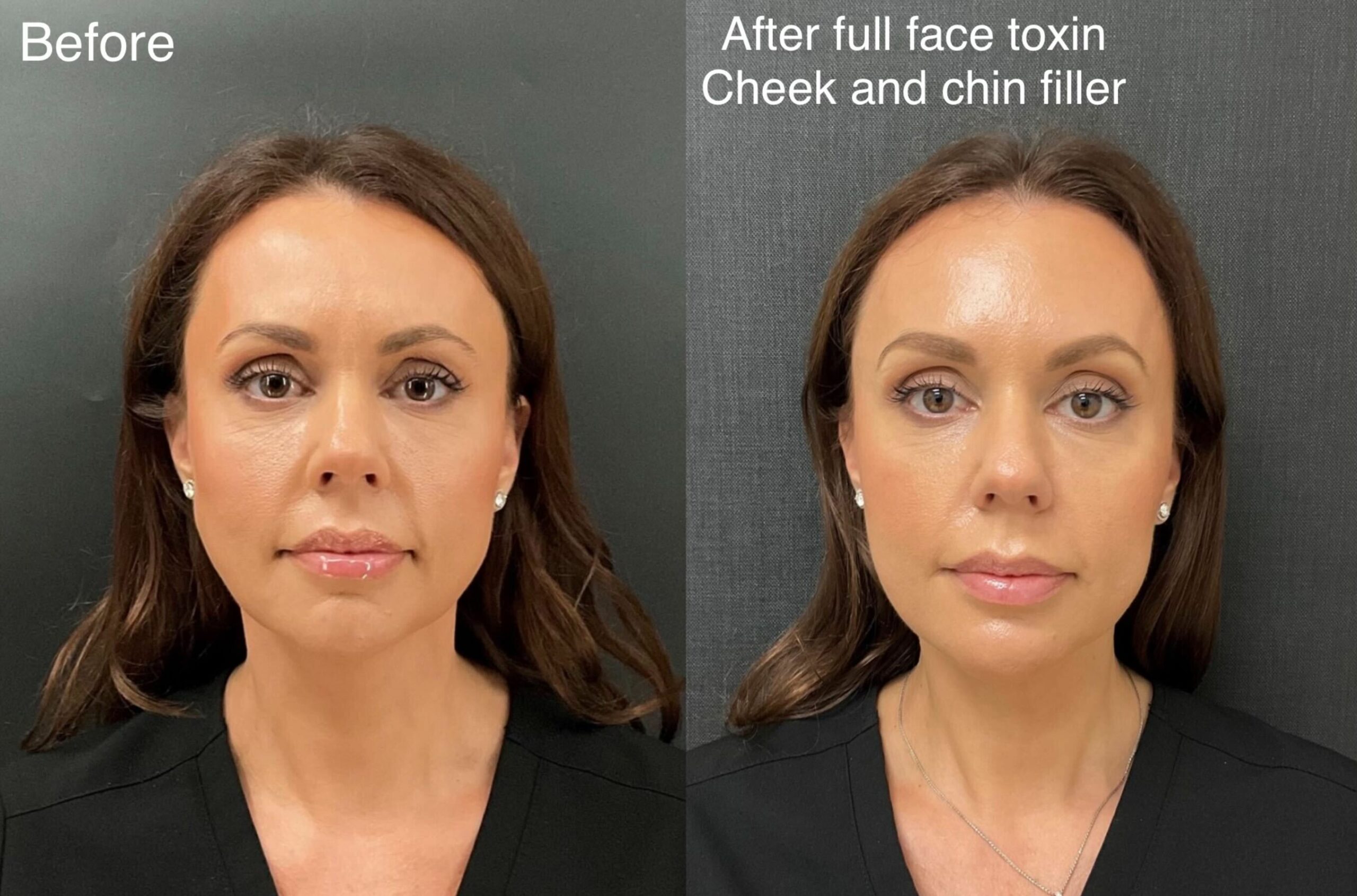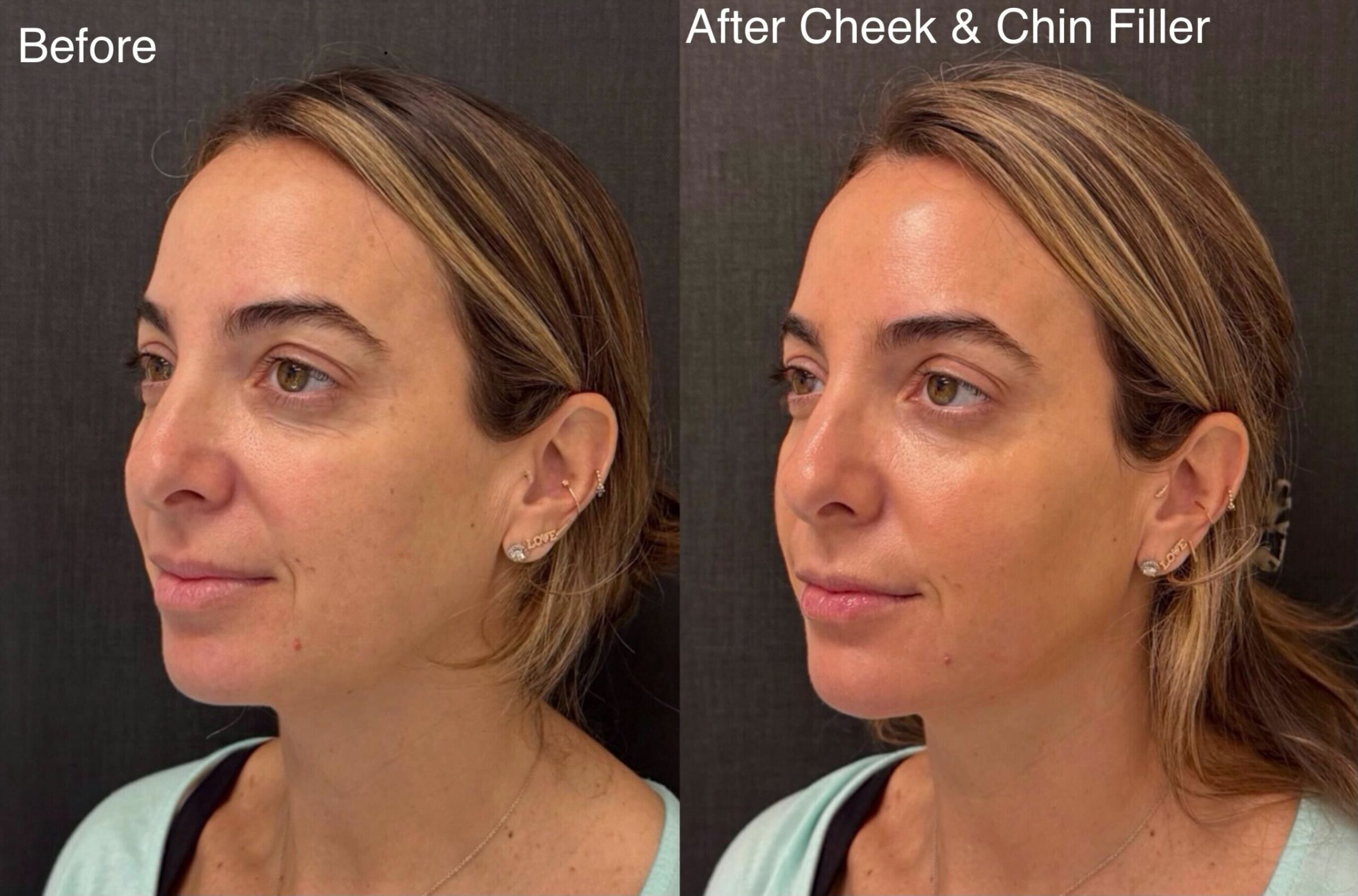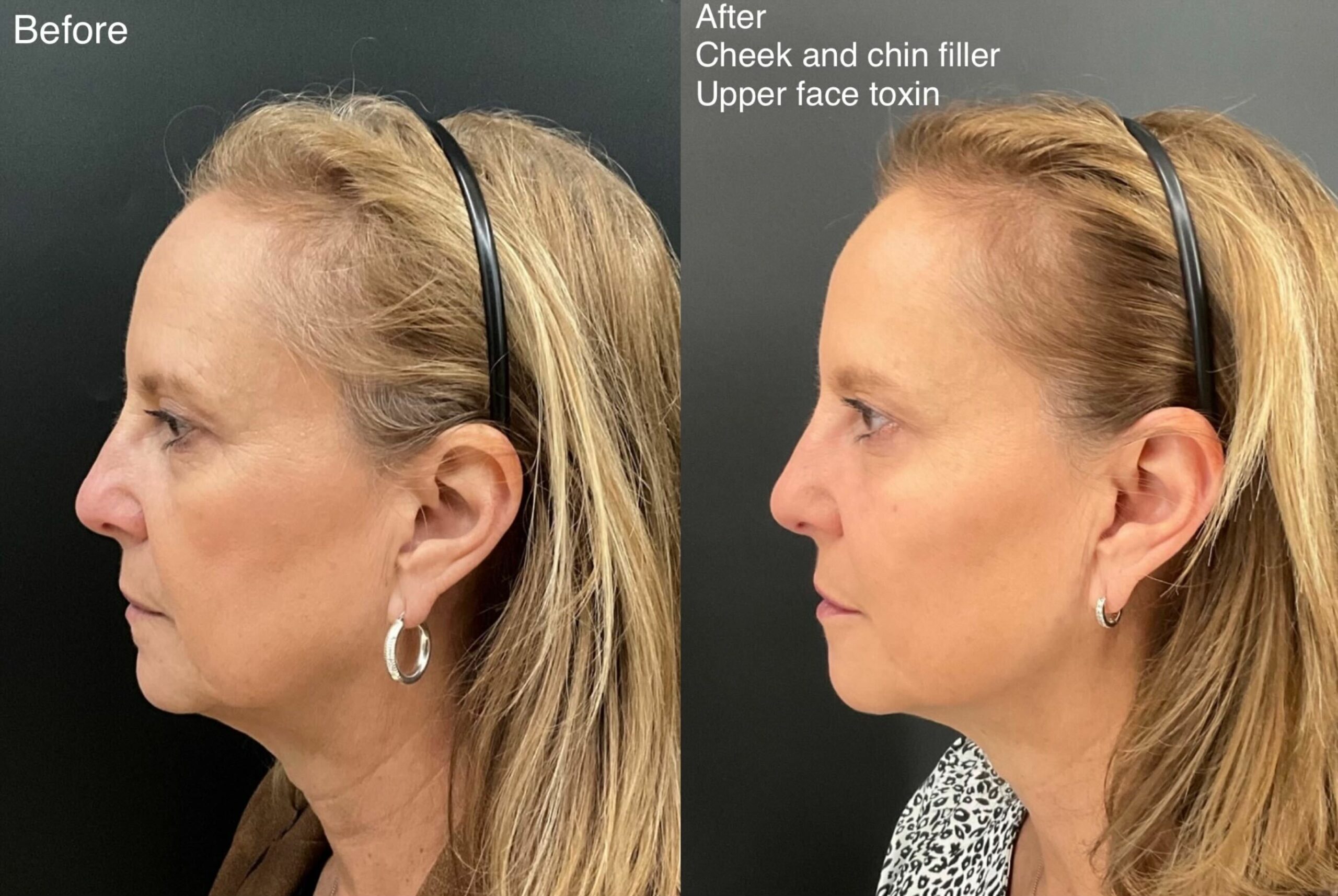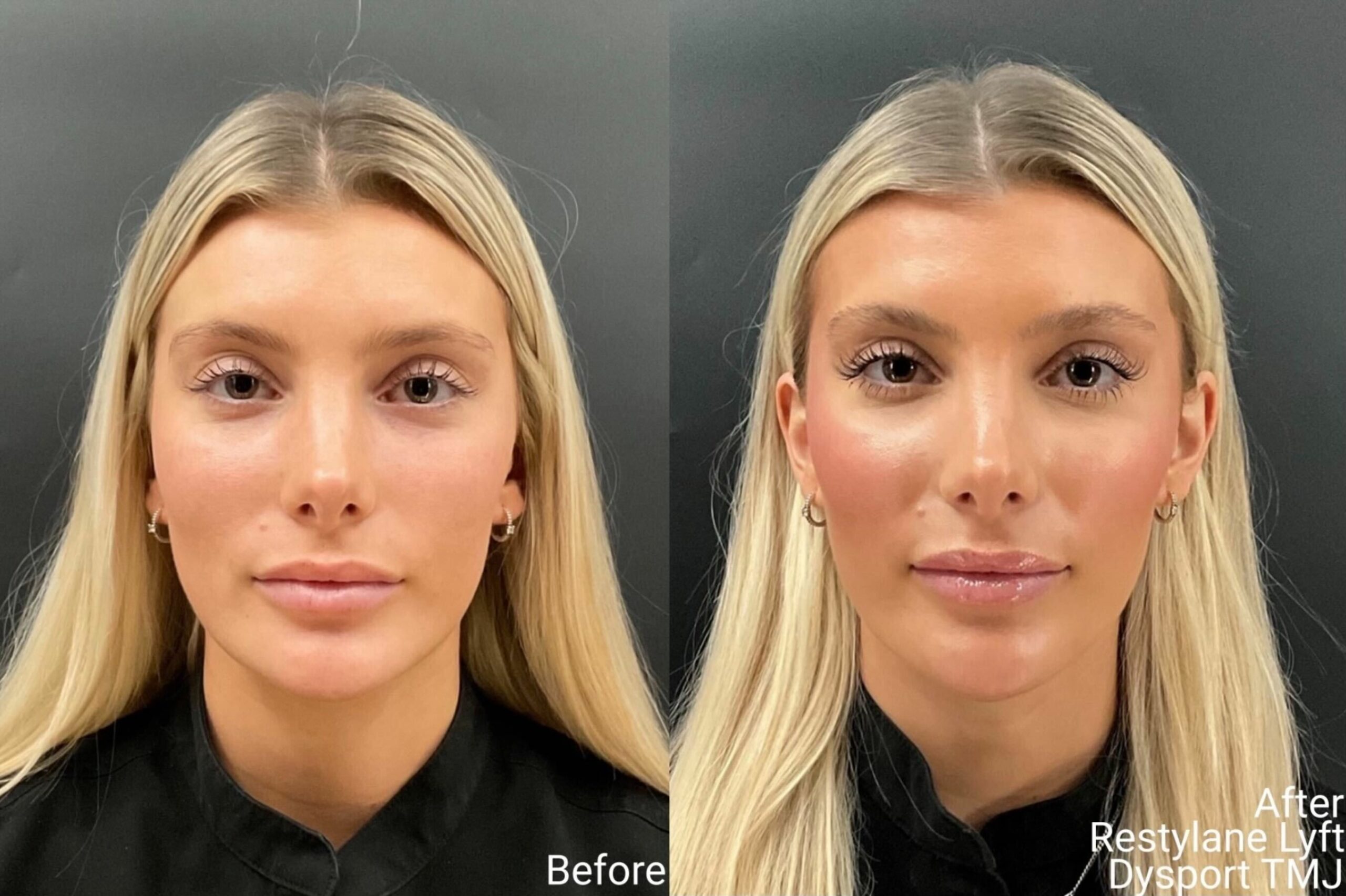CoolSculpting vs. Liposuction
CoolSculpting vs. Liposuction
In-Depth Comparison
In this comprehensive comparison, we’ll explore the differences between CoolSculpting and Liposuction, two popular methods for fat reduction. CoolSculpting is a non-invasive procedure that freezes and eliminates fat cells, while Liposuction is a surgical technique involving the removal of fat through suction.
| CoolSculpting | Liposuction | |
|---|---|---|
| The procedure | It’s a kind of cryptolysis, a technique that involves freezing fat cells. | A series of small incisions are made around the treatment area. A thin tube is used to loosen fat cells so they can be vacuumed out. |
| Safety | CoolSculpting is a noninvasive procedure. Side effects are usually minor. | Liposuction ia an invasive surgery that may require anesthesia. |
| Effectiveness and results | Less dramatic results. According to the CoolScultping, it can eliminate up to 20 to 25 percent of fat cells in a certain area. | More dramatic results. It can remove up to 5 to 8 liters of body fat. |
| Side effects | Side effects can include short-term bruising or skin sensitivity that usually resolves within weeks. | Side effects can include anesthesia reactions, blood clots, and other potentially serious complications. |
| Recovery time | There’s usually little to no recovery period. | Recovery takes about 3 to 5 days with lingering effects for weeks |
| Time to see full results | Typically, after a few weeks | Up to a few months |
| Cost | Between about $2,000 and $4,000. | In 2020, the average cost was $3,637. |

Overview of Procedures
Areas of the Body Commonly Treated
Both CoolSculpting and Liposuction offer remarkable versatility when it comes to sculpting and contouring the body, making them popular choices for individuals seeking to enhance their physical appearance. These procedures can effectively target a wide range of areas across the body, allowing patients to achieve their desired aesthetic goals. Here are some of the common areas of the body that are commonly treated with these two methods:
Abdomen
The abdominal region is one of the most frequently treated areas with both CoolSculpting and Liposuction. Whether it’s eliminating stubborn belly fat or achieving a flatter and more toned midsection, these procedures can help reshape the contours of the abdomen.
Thighs
CoolSculpting and Liposuction can address fat deposits on both the inner and outer thighs. This is particularly beneficial for individuals who wish to achieve slimmer and more sculpted legs.
Love Handles
The dreaded love handles, also known as flanks or muffin tops, can be effectively treated with both procedures. CoolSculpting’s non-invasive approach is often favored for this area, while Liposuction provides more immediate results.
Upper Arms
Patients looking to eliminate excess fat and achieve shapelier arms can benefit from both CoolSculpting and Liposuction. These treatments can help create a more toned and youthful appearance in the upper arm area.
Chin and Neck
Unwanted fat under the chin and along the neck, often referred to as a “double chin,” can be treated using CoolSculpting’s specialized applicators or through Liposuction. This can result in a more defined jawline and a rejuvenated facial appearance.
Back
Stubborn back fat can be a source of frustration for many individuals. Both CoolSculpting and Liposuction can target these areas, helping to sculpt the back for a smoother and more contoured appearance.
Flanks
Besides love handles, CoolSculpting and Liposuction are excellent choices for addressing fat deposits on the flanks or sides of the torso, creating a more streamlined silhouette.
Buttocks
While Liposuction can be used to reshape and contour the buttocks, CoolSculpting buttocks may also be employed to achieve subtle improvements in this area by reducing unwanted fat.
Knees
The knees can be a challenging area to tone through diet and exercise alone. Both procedures can help reduce fat around the knees and improve overall leg aesthetics.
Breasts
In some cases, CoolSculpting can be used to target excess fat in the chest area, while Liposuction can address gynecomastia, a condition where men develop enlarged breast tissue.
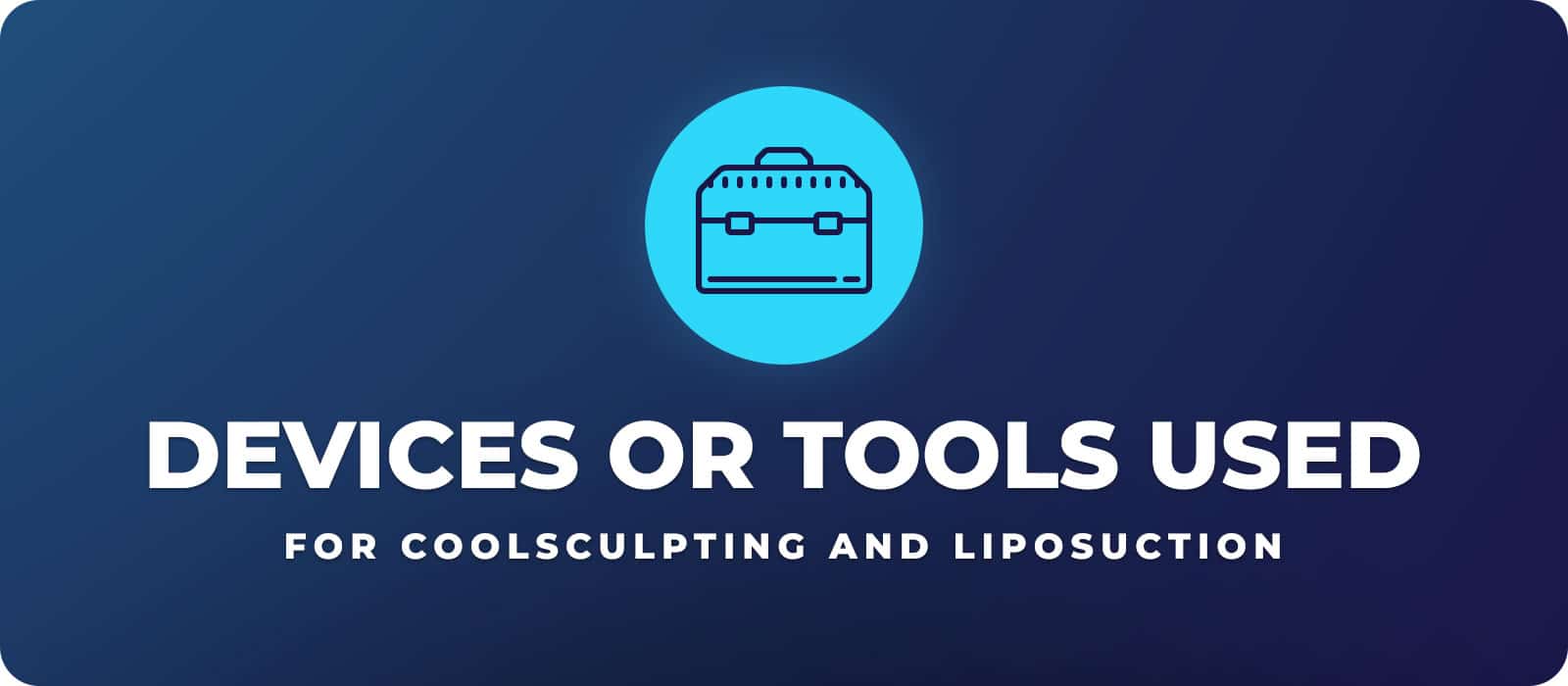
Devices or Tools Used
CoolSculpting and Liposuction are two distinct methods for body contouring and fat reduction, each employing a unique set of devices and tools to achieve their respective goals.
CoolSculpting Devices
CoolSculpting, also known as cryolipolysis, relies on a non-invasive approach to reduce fat. It utilizes specialized applicators designed to target and freeze fat cells in specific areas of the body. These applicators come in various shapes and sizes to accommodate different body contours. The primary components of a CoolSculpting system include:
- Applicators: CoolSculpting machines feature a variety of applicators, such as flat paddles, cups, or curved applicators, each suited for specific body areas like the abdomen, flanks, thighs, and chin. These applicators generate controlled cooling that chills the fat cells, causing them to undergo apoptosis (natural cell death).
- Cooling Panels: The applicators contain cooling panels that come into direct contact with the skin. These panels rapidly lower the temperature of the targeted fat cells without harming the surrounding tissues.
- Vacuum or Suction Mechanism: Some CoolSculpting applicators also incorporate gentle suction or vacuum pressure to draw the targeted fat tissue into the cooling chamber, ensuring more precise and effective treatment.
Liposuction Tools
Liposuction is a surgical procedure that involves the removal of excess fat through suction. It employs a range of specialized instruments and tools to perform fat extraction. These tools typically include:
- Cannulas: Cannulas are thin, hollow tubes with various tip designs that are inserted through small incisions in the skin. They are the primary tools used for fat removal in liposuction. The choice of cannula size and shape depends on the specific area being treated and the surgeon’s technique.
- Suction Device (Aspirator): A suction device, often referred to as an aspirator, is connected to the cannulas. It generates a vacuum that assists in the gentle extraction of emulsified fat tissue through the cannula.
- Tumescent Solution: Before the fat removal process begins, a tumescent solution is injected into the targeted area. This solution contains a local anesthetic and a vasoconstrictor, which helps numb the area and minimize bleeding. It also facilitates the breakup of fat cells, making them easier to remove.
- Power Source: Liposuction equipment typically requires an electrical power source to operate the suction device and other associated components.
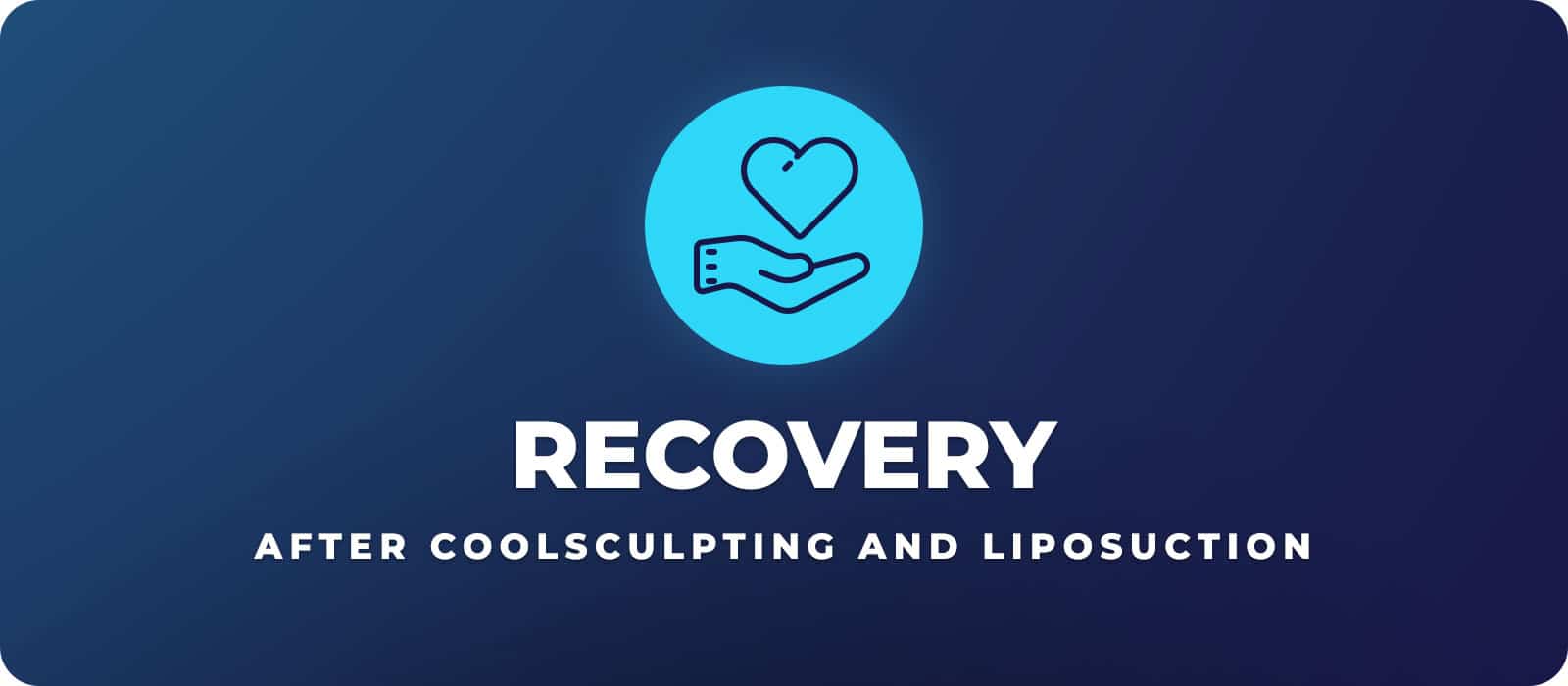
Recovery
Recovery following body contouring procedures such as CoolSculpting and liposuction is a crucial aspect to consider when deciding which method is best suited for your needs. These two techniques have distinct differences in terms of the recovery process, and understanding them can help you make an informed choice.
CoolSculpting
CoolSculpting is a non-invasive fat reduction method that uses targeted cooling to freeze and destroy fat cells. Its recovery process is relatively straightforward and comes with several advantages:
- Minimal Downtime: One of the primary benefits of CoolSculpting is that it typically involves minimal downtime. After the procedure, you can usually resume your normal activities almost immediately. This is particularly appealing to individuals with busy schedules or those who don’t want an extended recovery period.
- Swelling and Temporary Numbness: While CoolSculpting is relatively gentle on the body, it is common to experience some degree of swelling and temporary numbness in the treated area. These side effects are usually mild and resolve on their own over a short period.
- Gradual Results: It’s essential to note that CoolSculpting results develop gradually over several weeks as your body naturally eliminates the treated fat cells. This means you won’t see immediate changes, but rather a gradual improvement in the targeted area.
Liposuction
Liposuction is a surgical procedure that involves the removal of excess fat from specific areas of the body. It offers more dramatic and immediate results compared to CoolSculpting but comes with a more extensive recovery process:
- Moderate to Extensive Recovery: Liposuction typically entails a more moderate to extensive recovery period compared to CoolSculpting. Patients often experience bruising, swelling, and discomfort in the treated areas. The extent of these side effects can vary depending on factors such as the amount of fat removed and the individual’s response to surgery.
- Gradual Return to Normal Activities: Unlike CoolSculpting, which allows for a quick return to regular activities, liposuction patients may need to take it easy for a few weeks after the procedure. Strenuous physical activities should be avoided during this time to facilitate proper healing and minimize the risk of complications.
- Immediate Results: While CoolSculpting results take time to fully manifest, liposuction offers immediate improvements in body contour. However, it’s important to keep in mind that the final results may not be fully apparent until the post-operative swelling subsides.
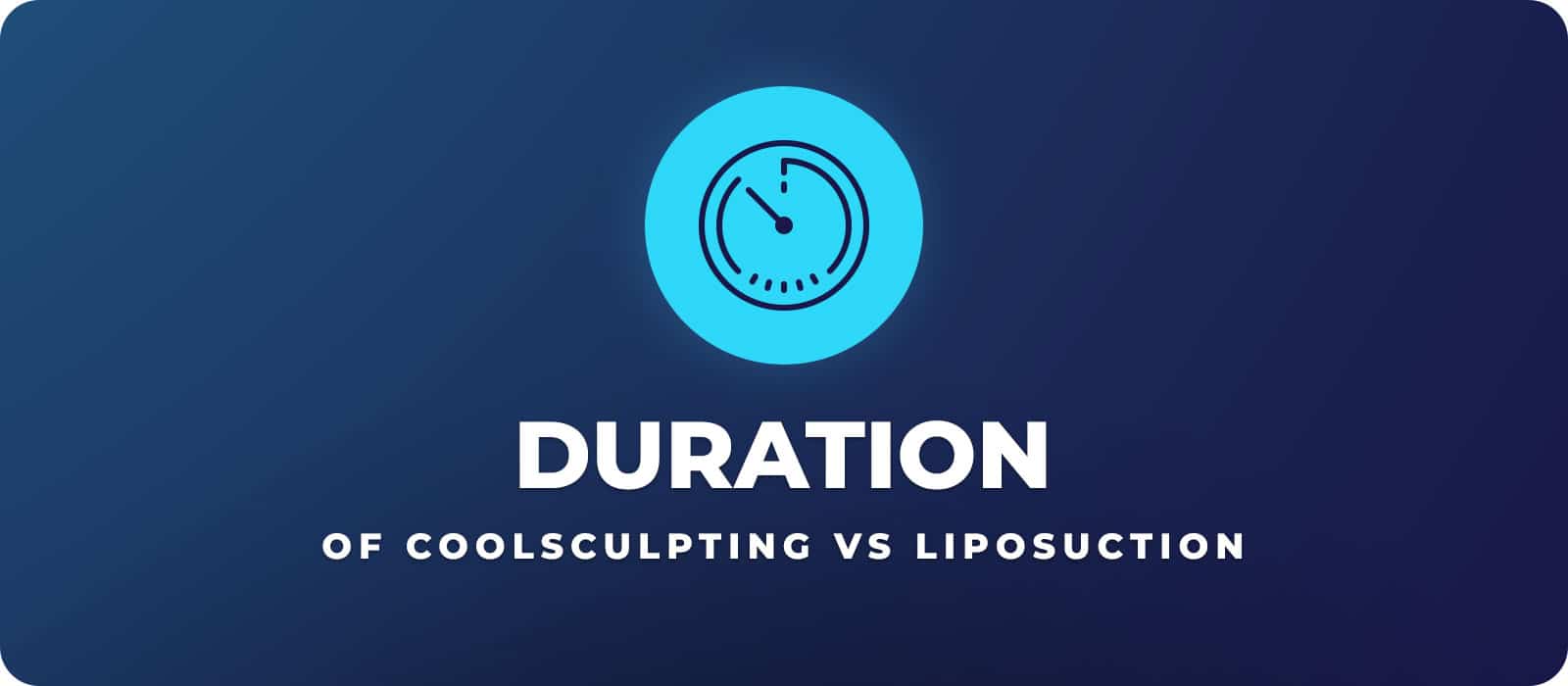
Duration
Duration is a critical factor to consider when comparing two popular fat reduction methods, CoolSculpting and liposuction. Both procedures aim to contour the body and reduce unwanted fat deposits, but they differ significantly in terms of the time investment required. During CoolSculpting treatment, a specialized applicator is placed on the target area, and the cold temperatures selectively target fat cells without harming surrounding tissues. In contrast, liposuction is performed under general or local anesthesia, and it involves making small incisions through which a thin tube called a cannula is inserted. The surgeon then suctioned out excess fat from the targeted areas. The time it takes to complete the liposuction procedure can range from one to several hours, depending on the complexity and size of the treatment areas.
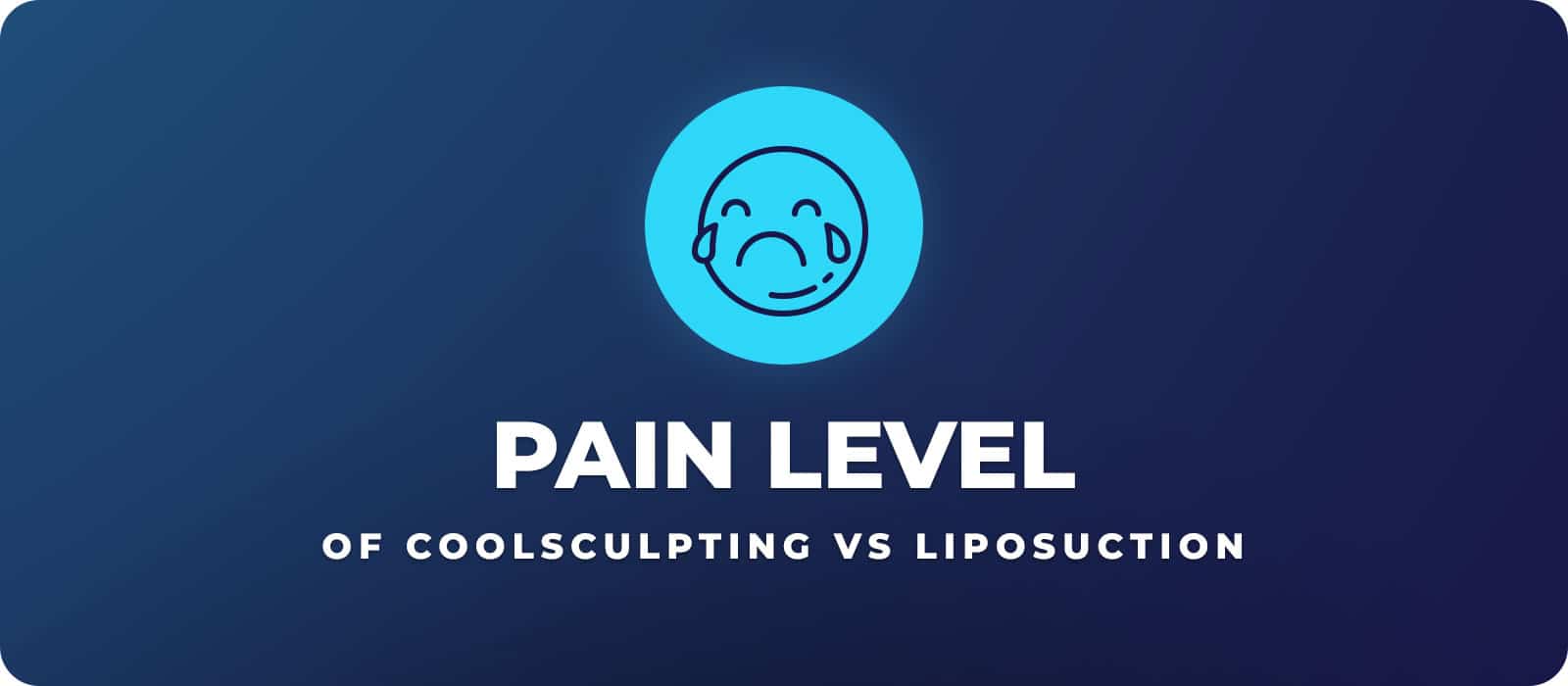
Pain Level
CoolSculpting
- Minimal Anesthesia or Numbing: CoolSculpting typically requires little to no anesthesia. Some patients may experience mild discomfort during the initial few minutes when the applicator is applied to the target area. However, as the treatment area becomes numb due to the cold temperature, any discomfort subsides.
- Post-Procedure Sensation: After the treatment, some patients might experience sensations such as tingling, numbness, or mild soreness in the treated area. These sensations are generally well-tolerated and are not considered painful. They typically resolve on their own within a few days to weeks.
- Minimal Recovery Time: CoolSculpting allows patients to resume their normal activities immediately after the procedure, without the need for downtime. This is in contrast to more invasive procedures like liposuction, which can require days to weeks of recovery.
Liposuction
- Anesthesia or Local Numbing: Liposuction is typically performed under general anesthesia or local anesthesia with sedation. This is necessary to ensure the patient’s comfort during the procedure, as it involves making small incisions and using a cannula to suction out fat.
- Discomfort During and After: During the liposuction procedure, patients may experience a sensation of pressure, tugging, or discomfort as the surgeon maneuvers the cannula beneath the skin. This discomfort can vary depending on the extent of the procedure and the patient’s pain tolerance.
- Post-Operative Pain: After liposuction, patients commonly experience soreness, bruising, and swelling in the treated areas. This discomfort can be moderate to severe and may persist for several days to weeks. Pain management medications are often prescribed to help manage post-operative pain.
- Recovery Time: Liposuction typically requires a longer recovery period compared to CoolSculpting. Patients may need to take time off work and avoid strenuous activities for several days to weeks, depending on the extent of the procedure.
While CoolSculpting offers a lower pain level and minimal downtime, liposuction involves moderate pain and a more extended recovery period. The choice between these two procedures often depends on the patient’s goals, pain tolerance, and willingness to undergo surgery, as well as the specific areas to be treated and the desired outcomes.
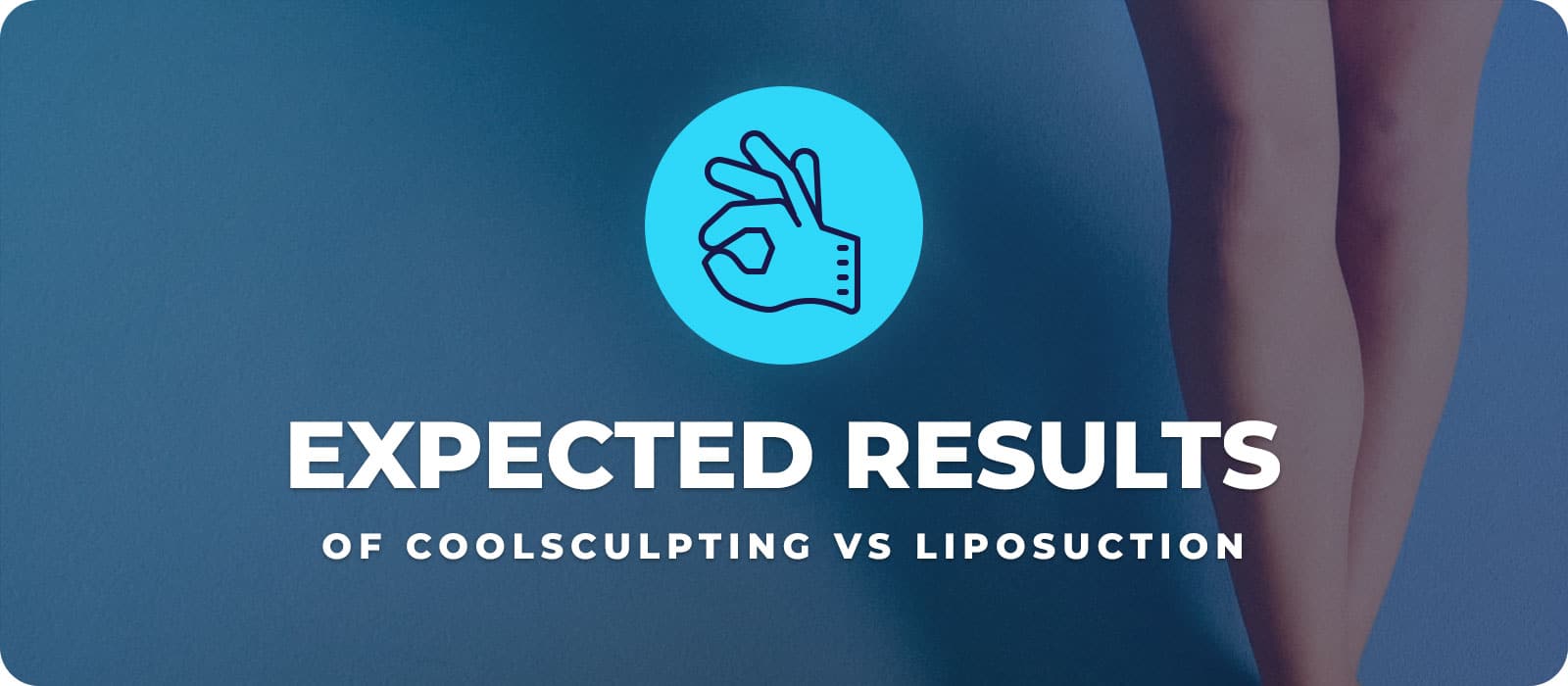
Expected Results
The expected results of CoolSculpting typically include a 20-25% reduction in fat in the treated area. This reduction occurs gradually over time and becomes visible over the course of one to six months. Here’s a more detailed breakdown of what you can expect:
- Gradual Fat Reduction: CoolSculpting works by freezing and destroying fat cells, which are then naturally eliminated by the body’s lymphatic system. This process takes time, and you can expect to see a gradual reduction in the treated area’s fat content.
- Progressive Improvement: While you may notice some initial changes within a few weeks, the most significant improvements become evident over the first few months following the procedure. As the body continues to process and eliminate the destroyed fat cells, the treated area will become slimmer and more contoured.
- Non-Invasive Nature: CoolSculpting’s non-invasive nature means there is minimal downtime and no need for surgical incisions or anesthesia. Patients can typically return to their regular activities immediately after the procedure.
- Multiple Sessions: Depending on your goals and the size of the treated area, you may require multiple CoolSculpting sessions to achieve the desired results. These sessions are usually spaced a few weeks apart.
Liposuction provides more aggressive fat reduction compared to CoolSculpting, with an expected fat reduction ranging from 25-50%. Here’s a more detailed explanation of what you can anticipate with liposuction:
- Immediate Fat Reduction: Unlike CoolSculpting, which offers gradual results, liposuction provides immediate fat reduction in the treated areas. You will notice a noticeable difference in your body shape right after the procedure.
- Greater Fat Removal: Liposuction is a highly effective method for removing larger volumes of fat from specific areas of the body. This can result in a more dramatic transformation compared to CoolSculpting.
- Surgical Procedure: Liposuction is a surgical procedure that requires anesthesia and small incisions. As a result, there is a longer recovery period compared to CoolSculpting, and patients may need to take some time off work and physical activities.
- Swelling and Bruising: It’s common to experience swelling and bruising after liposuction. These side effects typically subside over several weeks, and the final results become more apparent as the swelling goes down.
- Maintenance: While liposuction provides more immediate results, it’s essential to maintain a healthy lifestyle to prevent the accumulation of new fat in treated areas. A balanced diet and regular exercise can help you maintain your new body shape.
Before & After Photos
Oops! We could not locate your form.
Cost Breakdown
-
CoolSculpting: Average cost range of $2,000 – $4,000 per treatment area.
-
Liposuction: Average cost range of $3,000 – $7,000 per treatment area.
Ideal Candidates
CoolSculpting and Liposuction are two popular cosmetic procedures that are effective in achieving body contouring and fat reduction. The ideal candidates for both procedures share certain characteristics:
Specific Fat Deposits
Both CoolSculpting and Liposuction work best for individuals who have specific areas of stubborn fat that they want to target. These areas could include the abdomen, thighs, love handles, buttocks, or chin. Ideal candidates have localized pockets of fat that are resistant to diet and exercise.
Desire for Body Contouring
Candidates should have a clear desire for body contouring and enhancement. They should have realistic expectations about the outcomes of the procedures, understanding that they are not meant for massive weight loss but rather for refining and sculpting the body’s appearance.
General Good Health
Candidates should be in good overall health. This includes being at or near their ideal body weight, as these procedures are not intended as a primary method for significant weight reduction. Good health is essential to ensure a safe and smooth recovery.
Skin Elasticity
Skin elasticity is an important factor, especially for Liposuction. Candidates with good skin elasticity are more likely to achieve optimal results because the skin can better conform to the new body contours after fat removal.
Realistic Expectations
It’s crucial for candidates to have realistic expectations about the procedures’ outcomes and limitations. They should understand that while these treatments can provide noticeable improvements, perfection may not be attainable, and there may be some post-procedure recovery time.
Potential Side Effects
When considering cosmetic procedures like Liposuction and CoolSculpting, it’s essential to be aware of potential side effects and risks associated with each treatment. While both procedures aim to enhance your body’s contours and reduce unwanted fat, they may have some temporary side effects and, in rare instances, more serious complications.
Temporary Side Effects
- Swelling: After both Liposuction and CoolSculpting, patients commonly experience swelling. This swelling is a natural response to the trauma caused to the treated areas during the procedures. It can vary in intensity but usually subsides over a few days to a few weeks as the body heals.
- Bruising: Bruising is another temporary side effect that can occur with both Liposuction and CoolSculpting. This discoloration of the skin typically resolves on its own within a few weeks but can be managed with over-the-counter pain relievers and cold compresses.
Rare Risks
While these cosmetic procedures are generally considered safe, there are rare risks that patients should be aware of:
- Infection (Liposuction): Although the risk of infection with Liposuction is low, it is a potential complication that should not be overlooked. To minimize this risk, surgeons adhere to strict sterile protocols during the procedure, and patients are given post-operative care instructions to follow meticulously.
- Paradoxical Fat Hyperplasia (CoolSculpting): Paradoxical fat hyperplasia is an exceedingly rare side effect associated with CoolSculpting. Instead of reducing fat in the treated area, paradoxical fat hyperplasia leads to an abnormal increase in fat tissue. While the exact cause is not fully understood, it emphasizes the importance of selecting an experienced and reputable provider when considering CoolSculpting.
It’s crucial to have open and honest discussions with your healthcare provider or cosmetic surgeon before undergoing any procedure. They can provide you with a comprehensive overview of the potential side effects and risks, as well as help you weigh the benefits against the potential drawbacks. Additionally, following post-operative instructions diligently and attending all recommended follow-up appointments can significantly reduce the likelihood of experiencing these side effects and complications. Your safety and satisfaction are paramount in any cosmetic journey, and informed decision-making is the first step towards achieving your desired results.
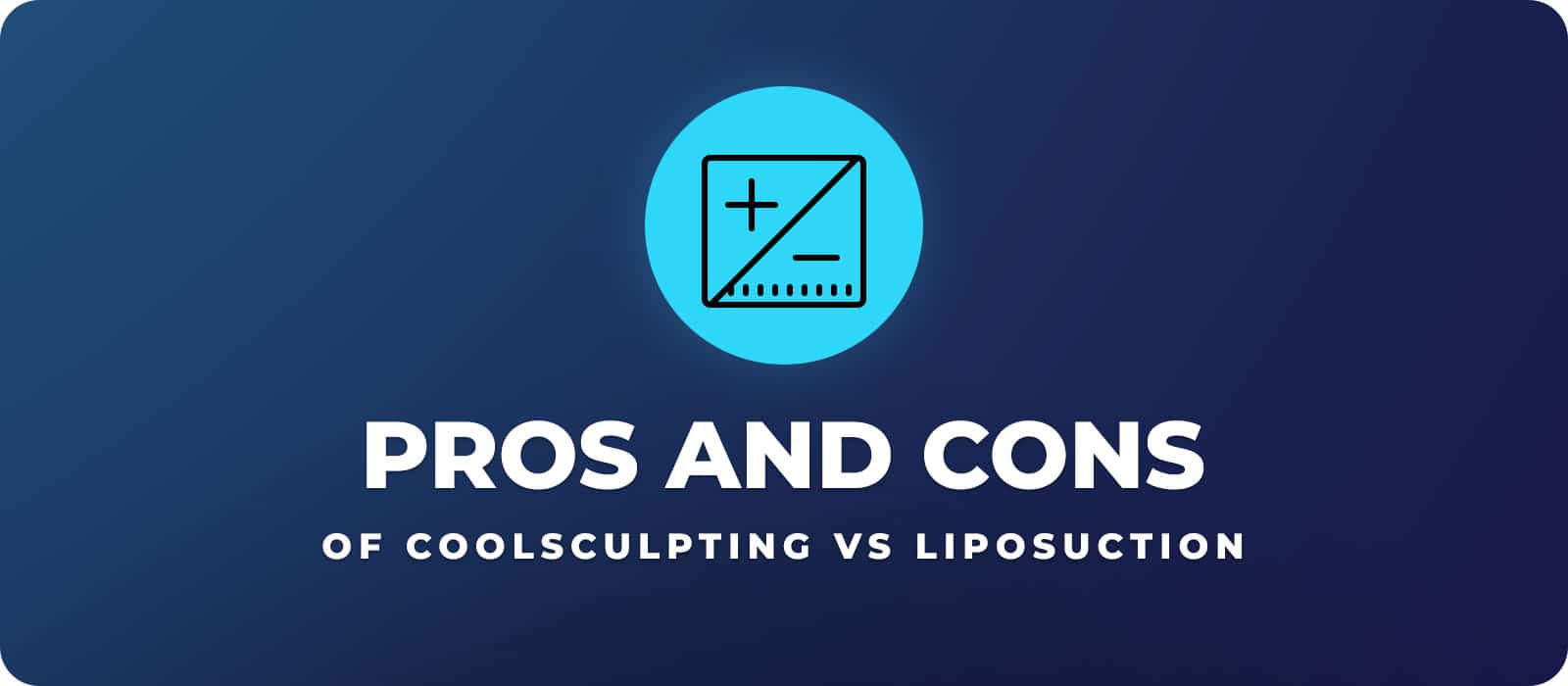
Pros and Cons
| CoolSculpting | Liposuction | |
|---|---|---|
| Pros: |
|
|
| Cons: |
|
|
Choose a CoolSculpting or Liposuction with BodySquad Today
When choosing between CoolSculpting and Liposuction, consider your goals, pain tolerance, recovery time, and budget. Consultation with experts is essential for personalized recommendations. Our experts will assess your unique needs and anatomy to provide tailored guidance on the optimal procedure for you.



